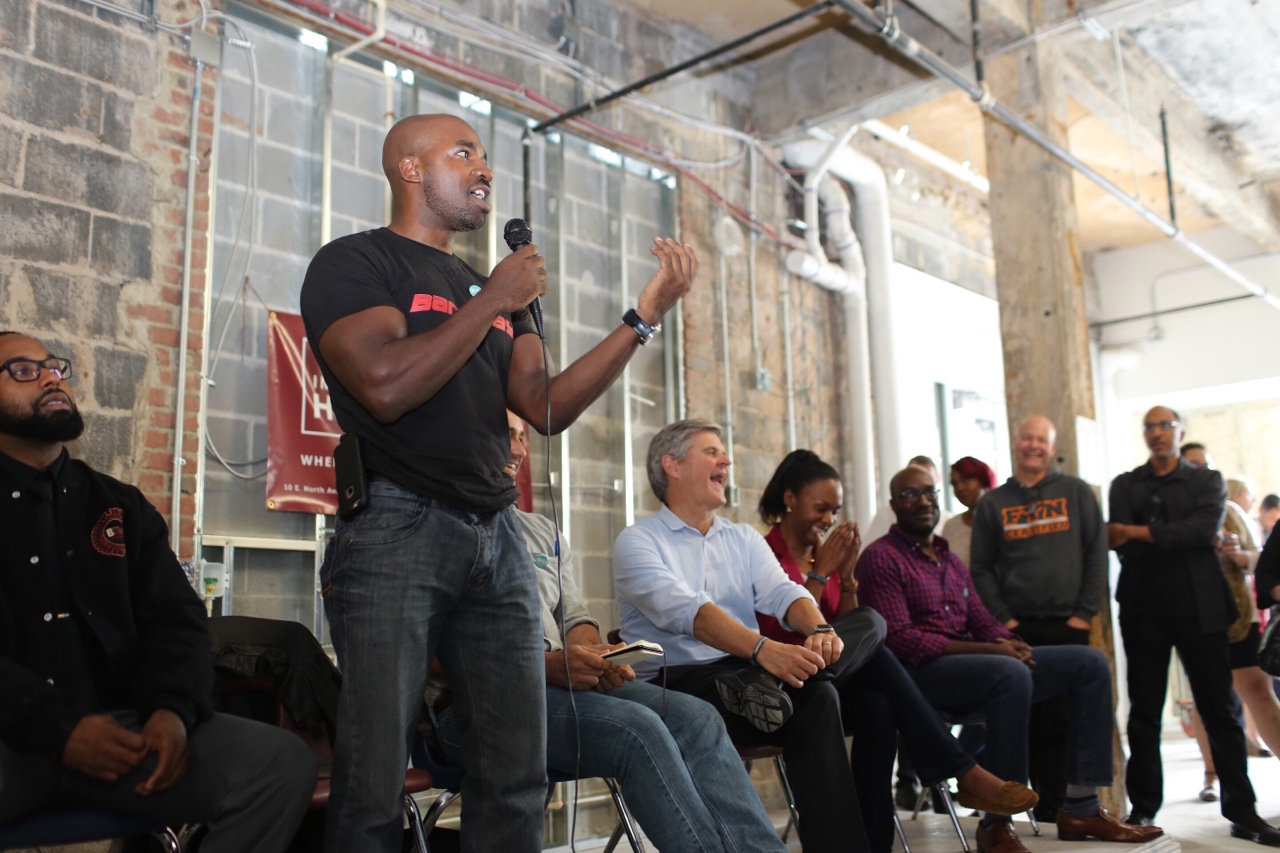Throughout the week, we're posting stories from veterans who’ve made strides in the technology industry on our blog and on Medium. You can also find them all here and follow the conversation about how to support more veterans in this growing industry at #VetsWhoTech.
When Aaron Saari applied to West Point in 2002, he was well aware that in a post-9/11 world a military deployment would immediately follow his graduation. “Our whole class knew what was coming after graduation,” he says. Indeed, Aaron did end up deploying twice after graduating from West Point in 2007. He spent 15 months in Iraq and another six months in Afghanistan as an officer. It was these experiences, leading a team of soldiers halfway across the world, that inspired him to become an entrepreneur.
“I’m less than a year out of college and at 23, I’m given 30 people—some older than me, some younger than me, some men, some women—and $15-20 million worth of equipment, and I’m told to do all these things I’ve never done before…if that’s not being an entrepreneur, I’m not sure what is.” His experience in the field also taught him risk analysis, leadership, how to be nimble, and how to pivot quickly in life-threatening situations.
Upon returning stateside, Aaron recognized a further career in the military wouldn’t entail the same kinds of responsibilities he had been afforded as an officer on the battlefield—it looked a lot more like a desk job. Growth opportunities seemed riddled with layers of bureaucracy and hierarchy, a stark contrast to the relatively flat and merit-based culture of technology entrepreneurship.
All the while, Aaron had been following and studying startups and successful entrepreneurs. While still in the military, Aaron read Tim Ferris’s The 4-Hour Workweek. “It was a paradigm-shifting book,” Aaron explains, “It gives you a glimpse into the future of work and how the global economy operates.” He picked up other ideas and skills from books on entrepreneurship, the lean startup model, and Internet marketing, teaching himself what it would take to eventually start his own business.
“When I got out, I started building the business,” Aaron says.
To pursue a career change from a military officer to a technology and marketing entrepreneur, Aaron first considered some of the resources the GI Bill provided. He could earn an MBA or take advantage of business education programs offered by Veterans Affairs and the Small Business Administration. But ultimately, he didn’t want to spend two valuable years sitting in a classroom gaining a graduate degree, and the other resources available to veterans just seemed outdated. “The concepts that they’re teaching are not the way the world works any more.”
In addition to the books he had read, Aaron also came across online resources covering the latest trends in digital marketing, data analysis, and usability testing. He sought out informal, online communities of veterans who had started their own businesses or worked at fast-growing technology companies. “I found people that were doing things, doing things well, doing things quickly... [who] created their own networks.” Aaron found these resources were relevant and easily available to prepare him to launch his own business and take a lead role at a growing startup.
Today, he runs Base of Fire, a growth and marketing consultancy for small businesses, but that’s not all. After focusing on Base of Fire for nine months, Aaron attended a startup event in San Francisco where he met the founder of a new company called Remoov—an online platform that helps people declutter their homes by integrating pickup, moving, and donation services. Soon, Remoov was recruiting him. Realizing that scaling operations at a young company would offer him even greater experience and exposure as a burgeoning tech entrepreneur, Aaron joined on as head of operations.
Aaron continues to tap into networks of veterans in the tech and startup world as he seeks out advice in growing and expanding his latest ventures. As a business leader, he also wants to hire veterans. However, he worries many veterans transitioning to the civilian workforce aren’t getting the education they need, noting that many of the officially accredited programs haven’t kept up with the pace of technological and business changes.
One thing is certain though—the veteran community is a unique workforce because more than anyone, they know how to “adapt and overcome,” Aaron says. “We’re a community of problem solvers. We’re going to find a way to get things done.”

















